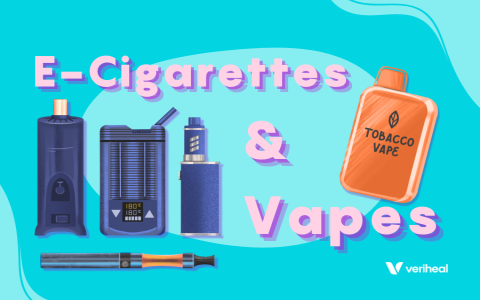Electronic cigarettes, commonly known as e-cigarettes or vapes, are battery-powered devices designed to simulate smoking by heating a liquid solution into an inhalable aerosol. Unlike traditional cigarettes, they do not involve combustion of tobacco.
Core Components
Most e-cigarettes consist of several fundamental parts:

- Battery: Powers the device, usually rechargeable via USB.
- Atomizer/Heating Coil: A small heating element that vaporizes the e-liquid.
- E-liquid (Vape Juice): The solution heated to produce vapor. Contains varying ingredients:
- Propylene Glycol (PG) and/or Vegetable Glycerin (VG): Base liquids providing throat hit (PG) and vapor volume (VG).
- Nicotine: Optional, ranging from zero to high concentrations.
- Flavorings: Numerous chemical compounds providing taste (e.g., fruit, mint, tobacco).
- Tank or Pod: Reservoir holding the e-liquid.
- Mouthpiece: The part through which the user inhales the aerosol.
How They Work
When the user activates the device (via a button or automatic draw), the battery supplies power to the atomizer. The heating coil rapidly heats the e-liquid soaked in a wicking material (often cotton). This process, known as “vaping,” turns the liquid into an aerosol, not water vapor. The user then inhales this aerosol.
Nicotine Delivery
Many e-liquids contain nicotine derived from tobacco. Nicotine concentration is typically listed in milligrams per milliliter (mg/mL) or as a percentage. The aerosol delivers nicotine to the lungs, from where it is absorbed into the bloodstream. Nicotine potency depends on the device’s power output and user behavior.
Health Considerations
While generally considered less harmful than combustible cigarettes due to the absence of tobacco combustion and many toxic byproducts, e-cigarettes are not risk-free. Key points include:
- Nicotine is highly addictive and can harm adolescent brain development.
- The long-term health effects of inhaling aerosolized flavorings and base liquids remain under investigation.
- E-cigarette aerosol typically contains fewer harmful chemicals than cigarette smoke but can still contain toxicants like nicotine, ultrafine particles, volatile organic compounds, and heavy metals (e.g., nickel, tin, lead).
- They are not approved as smoking cessation devices in many regions. Consultation with a healthcare professional is recommended for quitting.









